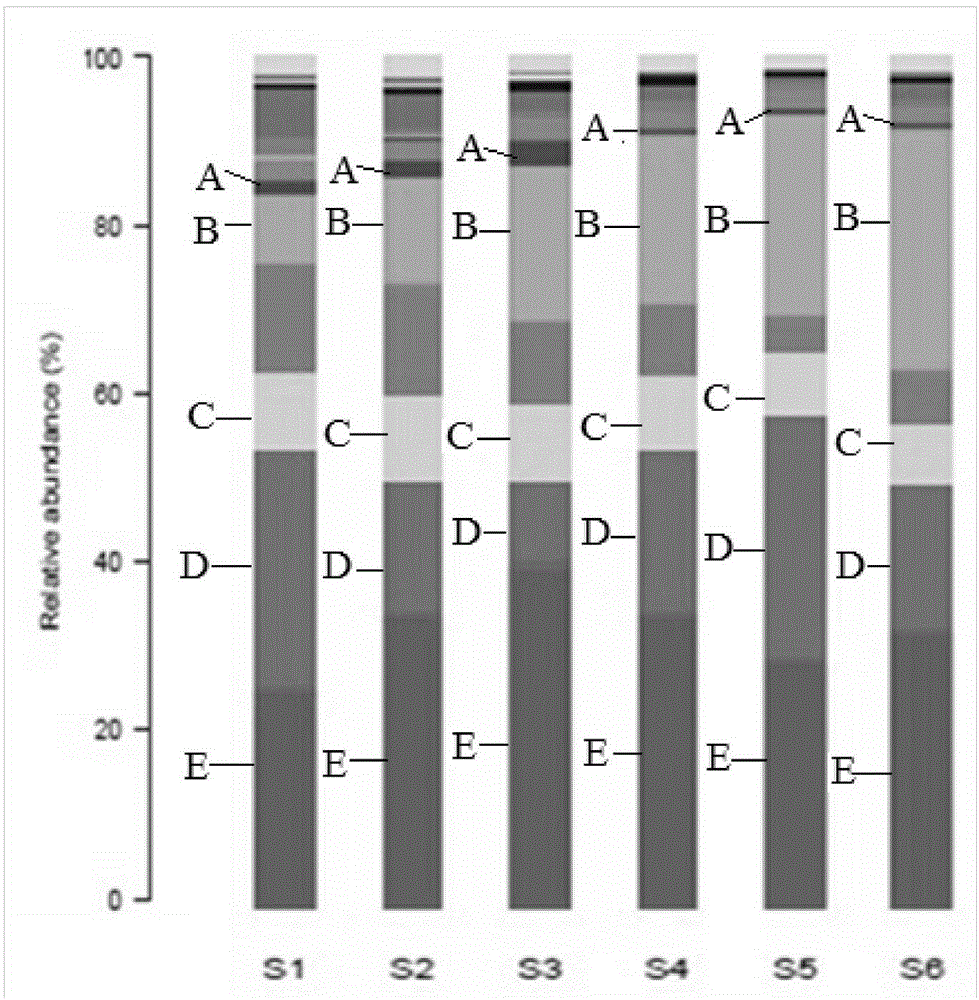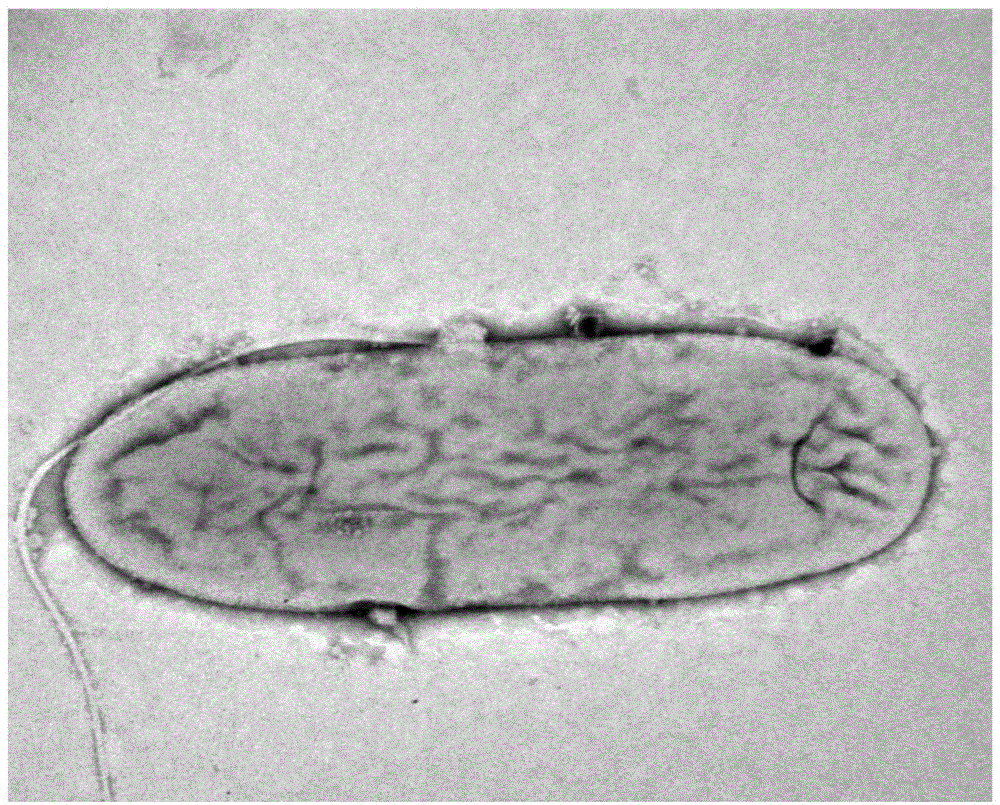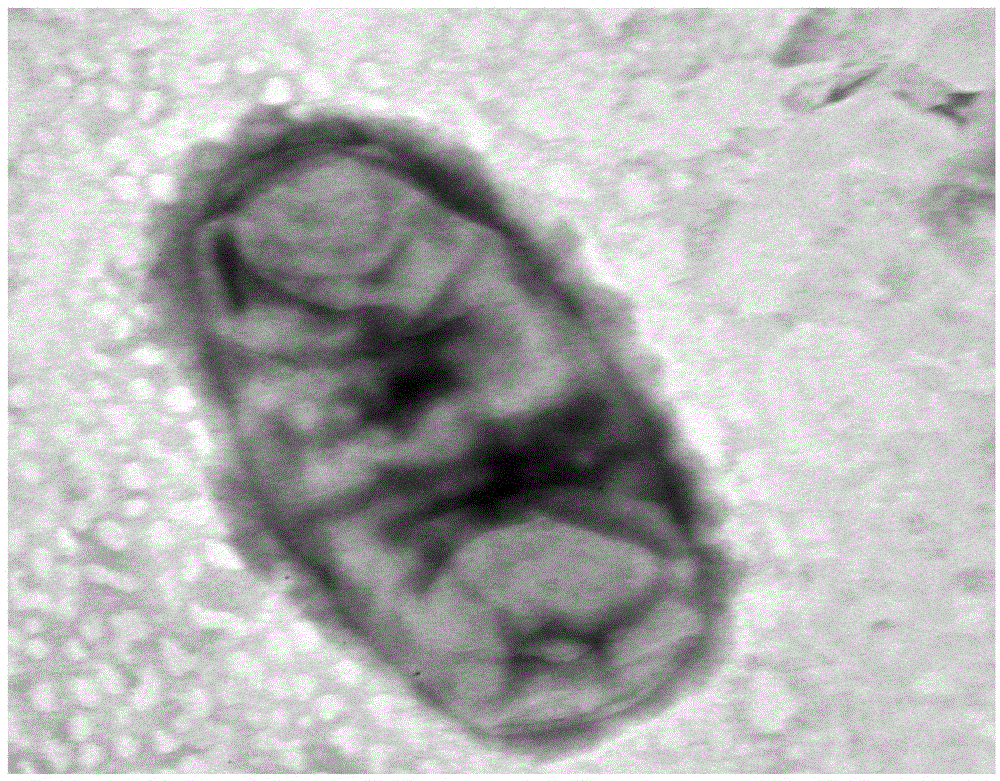Method for separating denitrification desulfurizing bacteria based on biodiversity information
A technology of denitrification, desulfurization and biodiversity, applied in the field of environmental microbiology, can solve the problems of lack of screening conditions, difficult screening of functional microorganisms, etc., and achieve the effect of efficient and synchronous metabolism of organic carbon
- Summary
- Abstract
- Description
- Claims
- Application Information
AI Technical Summary
Problems solved by technology
Method used
Image
Examples
specific Embodiment approach 1
[0023] Specific embodiment one: a kind of method for separating denitrification desulfurization bacteria based on biodiversity information of the present embodiment, it is carried out according to the following steps:
[0024] 1. Sludge samples were collected from a stable expanded granular sludge bed reactor for biological desulfurization and denitrification;
[0025] 2. The high-throughput sequencing technology used to analyze the spatial structure and abundance of the sludge samples to obtain biological diversity information; wherein, the biological diversity information refers to: the fluctuation of bacterial abundance and spatial ecology Distribution information; at the same time, the sludge collected in step 1 was added to sterile water at a volume ratio of 1:5, and glass beads were put in at the same time, and the rotation speed was 220 rpm for 24 hours. suspension of genus;
[0026] 3. After diluting the bacterium solution of each genus in step 2, spread it on the sol...
specific Embodiment approach 2
[0031] Specific embodiment 2: The difference between this embodiment and specific embodiment 1 is that in step 1, the sludge sample is collected from the expanded granular sludge bed reactor for biological desulfurization and denitrification in step 1, which refers to the collection of sludge samples from the carbon in organic wastewater. Sludge samples were collected from an expanded granular sludge bed reactor for biological desulfurization and denitrification with removal rates of 99% for pollutants such as nitrogen and sulfur. Others are the same as in the first embodiment.
specific Embodiment approach 3
[0032] Embodiment 3: This embodiment differs from Embodiment 1 in that the sludge collected in step 1 is collected from expanded granular sludge bed reactors that operate stably at different heights for biological desulfurization and denitrification. Others are the same as in the first embodiment.
PUM
 Login to View More
Login to View More Abstract
Description
Claims
Application Information
 Login to View More
Login to View More - R&D
- Intellectual Property
- Life Sciences
- Materials
- Tech Scout
- Unparalleled Data Quality
- Higher Quality Content
- 60% Fewer Hallucinations
Browse by: Latest US Patents, China's latest patents, Technical Efficacy Thesaurus, Application Domain, Technology Topic, Popular Technical Reports.
© 2025 PatSnap. All rights reserved.Legal|Privacy policy|Modern Slavery Act Transparency Statement|Sitemap|About US| Contact US: help@patsnap.com



